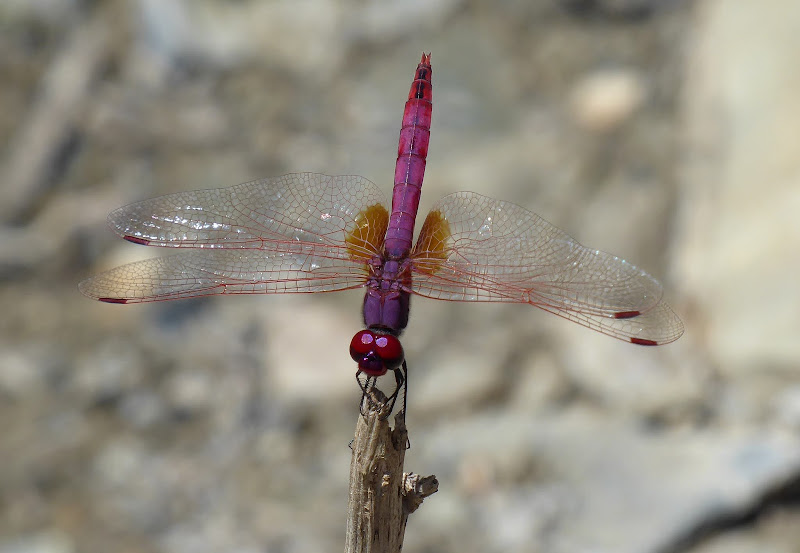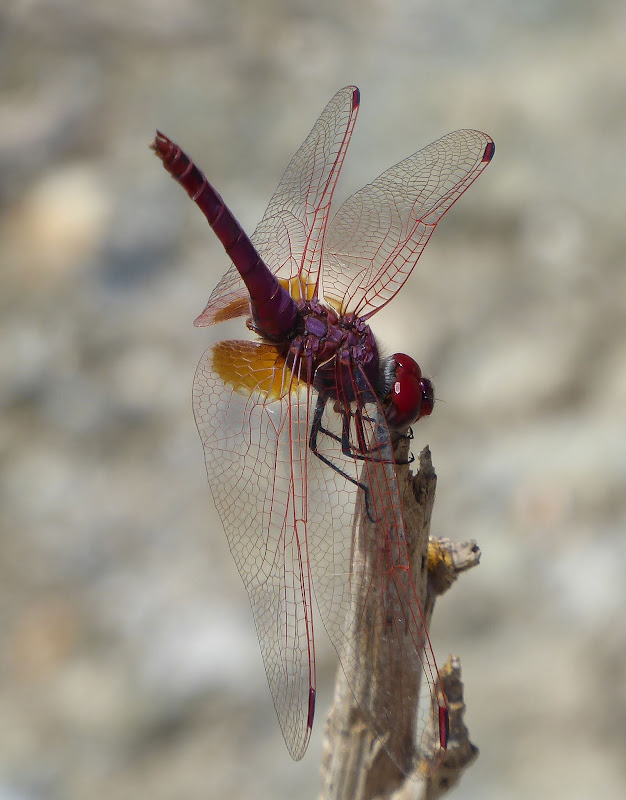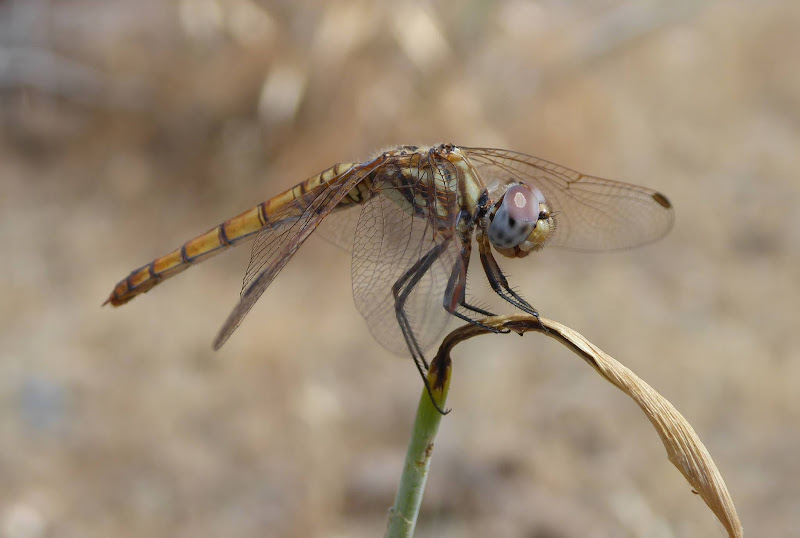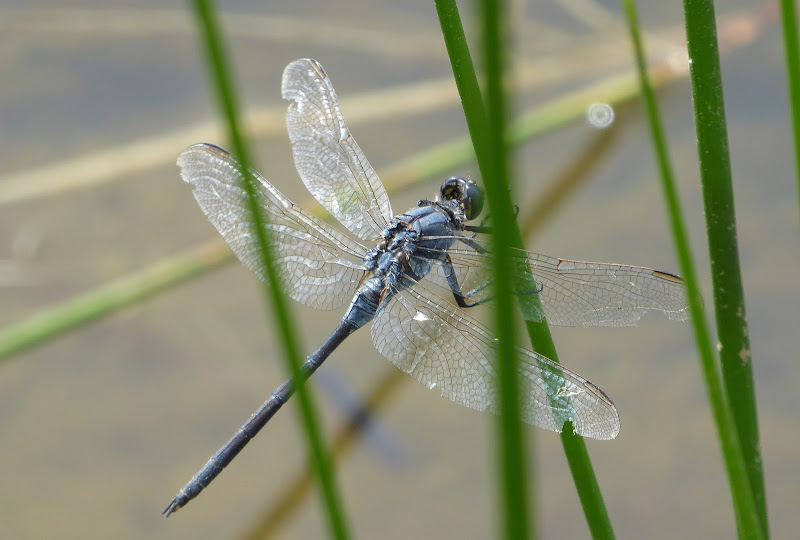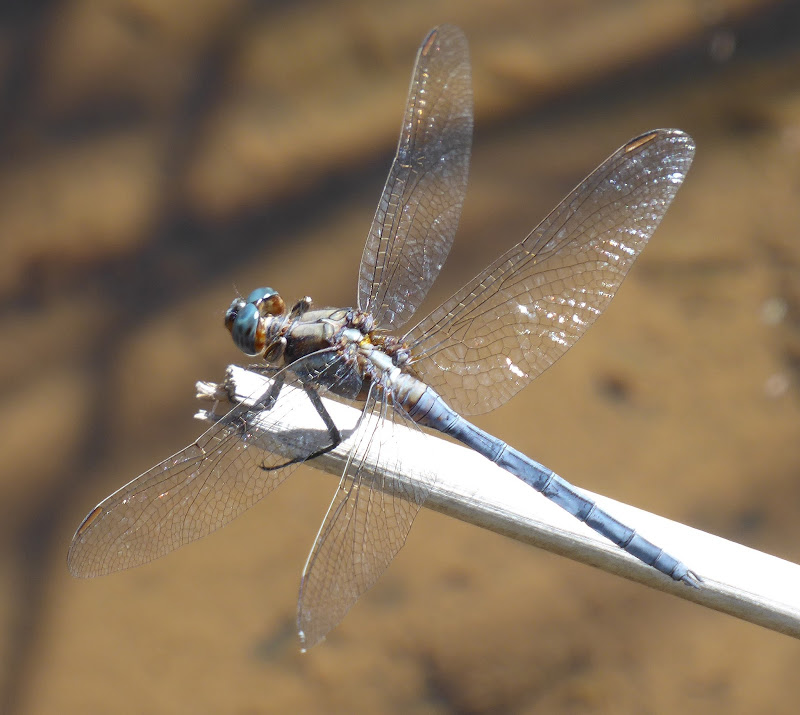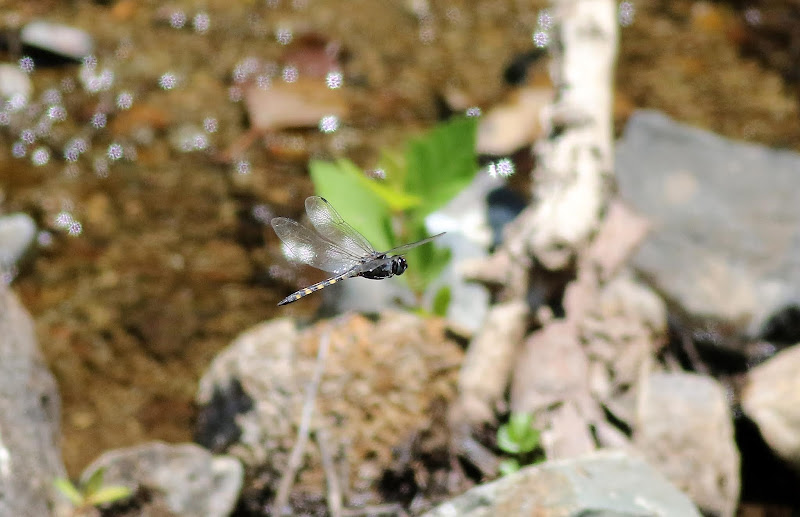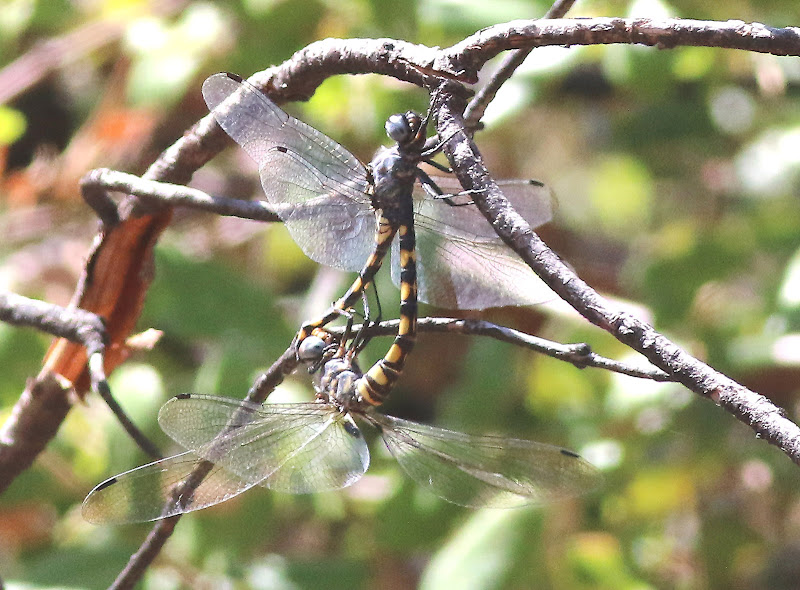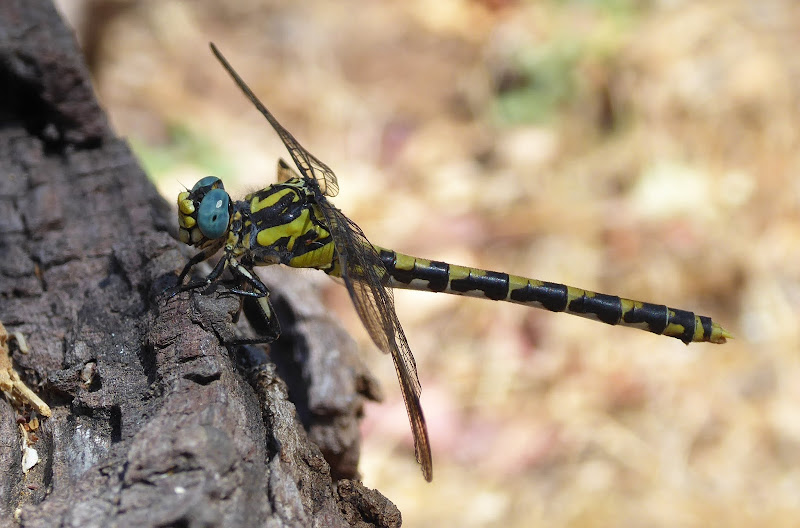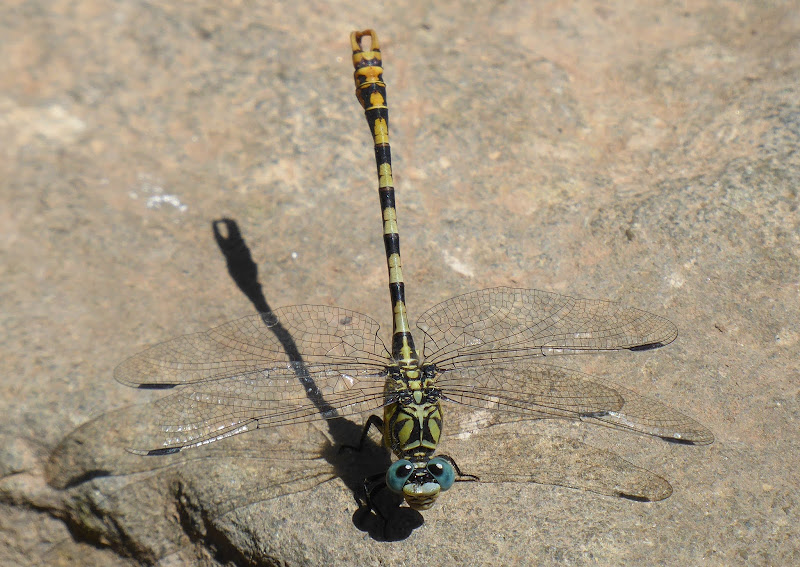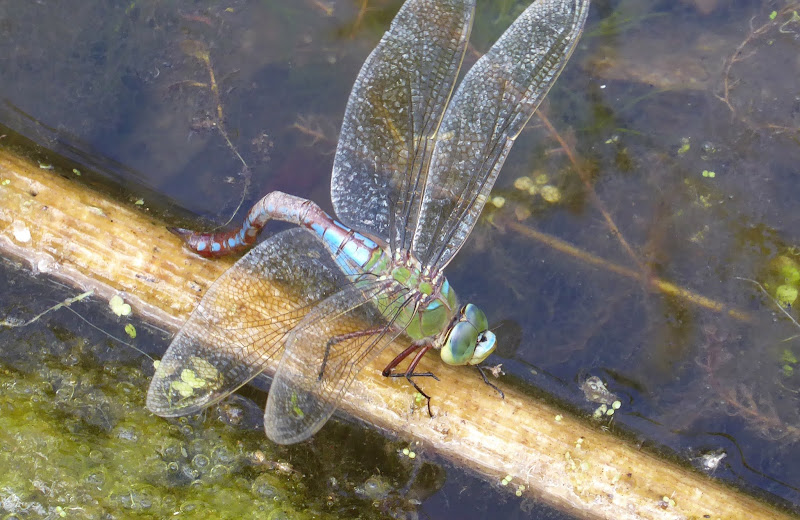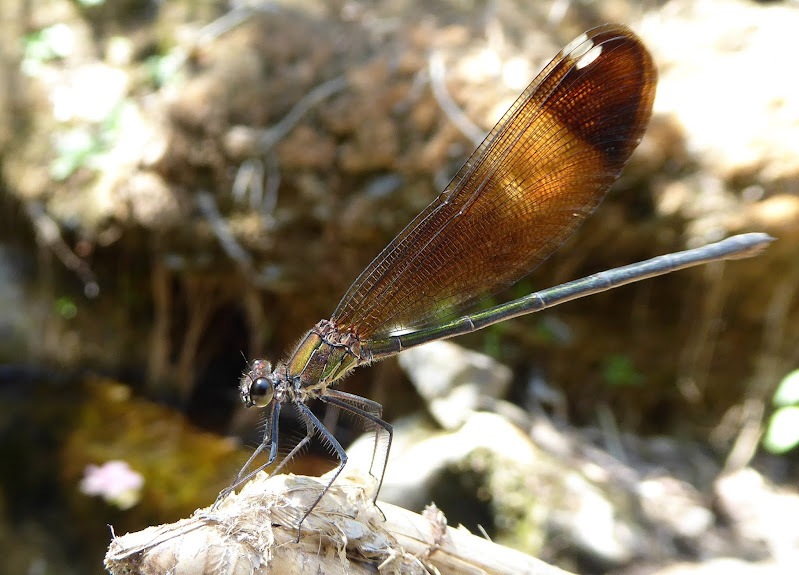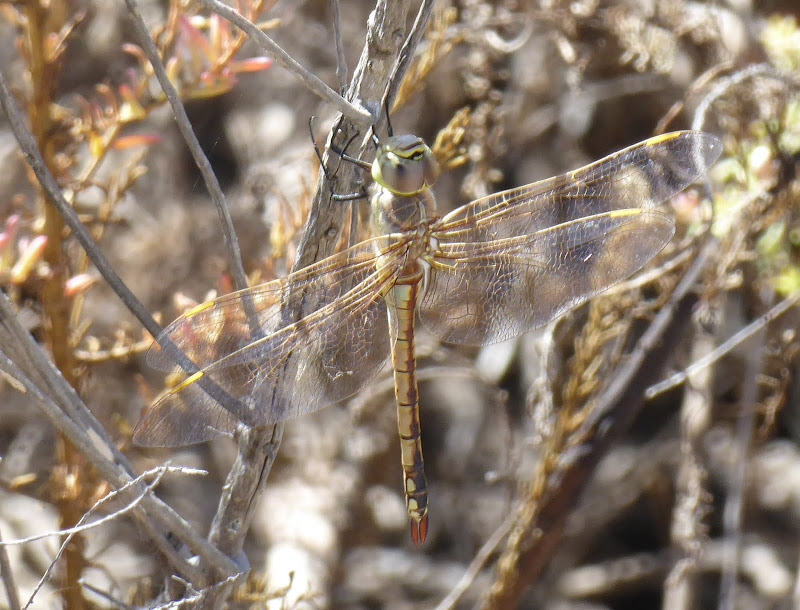One year ago yesterday, I found the first Lesser Grey Shrike (Lanius minor) for Portugal, at the cape-area near Sagres (Vila do Bispo), next to a farm known as "Vale Santo". The record has been accepted by the Portuguese Rarities Committee (CPR).
 |
Lesser Grey Shrike / Picanço-pequeno / Schwarzstirnwürger (Lanius minor) 1st winter. Vale Santo (Vila do Bispo), Algarve, 20-Sept-2019. All photos: GS. The same Ind. in the pictures below. |
 |
Note the extremely long primary projection of this long distant migrant and compare with the short winged L. meridionalis here. Obvious also the reduced amount of white on tertial tips (almost absent) and greater coverts and the absence of white tipped mantle feathers (compare L. meridionalis). |
 |
Lesser Grey Shrike showing rather squarish wing panel (formed by the white primary bases) reaching the second primary (P2) = the edge of the wing (P1 is very short and almost invisible). Wing formular different from L. meridionalis (P2 and P3 significantly shorter on the latter species and the primary patch does not reach the edge of the wing). Tail shorter on L. minor. Compare these features here. |
 |
| Bill shape roundish - shorter and higher in profile than in L. meridionalis and the "Grey Shrikes" of the L. exubitor-complex. Bill base colour greyish, black confined mostly to lower mandible and the bill tip. Finally, the bird also lacks the fine white line seperating the bill and the black eye mask from the grey forehead, as in L. meridionalis. The different "jizz" (overall impression), reduced overall size and different color tones, including the salmon color on chest and belly, as well as different tones of grey (the bird appeared "whiter" when seen stooping down on an insect and in flight) caught my initial attention. Why is this species so rare in Portugal? Lesser Grey Shrike was very close to extinction in Iberia, with the only remaining breeding population in Catalonia, eastern Spain, reduced to one (!) pair in 2011-2013. A successful conservation program (more info: Trenca) was started and saved the species from extinction in Spain. The program now includes captitive breeding. Released birds are (color-) ringed and some are tagged with a small transmitter to learn more about their migrations and the wintering areas. The Sagres-bird was not ringed. This- and the fact that a heavy storm, with extreme easterly winds in the central- and western Mediterranean, took place just a few days before, supports the hypothesis that this bird had been "blown off course" and carried away during its (at first) normally eastbound migration, somewhere in the central- or eastern Mediterranean, finally making "land fall" shortly behind the Cape of São Vicente, north of Sagres, where it was seen for two days only by a few observers. In the photo below: Pallid Harrier (Circus macrourus), juvenile. Seen about 20 mins before (!) and only c. 200 m away from the above "shrike encounter". Also a rarity in Portugal, even though observations here, like everywhere else in western Europe, have increased in the last decade or so and the species nowadays even nests in the Netherlands, Spain and a few other European countries, where it used to be a rare vagrant not long ago (further Info is here).  |




